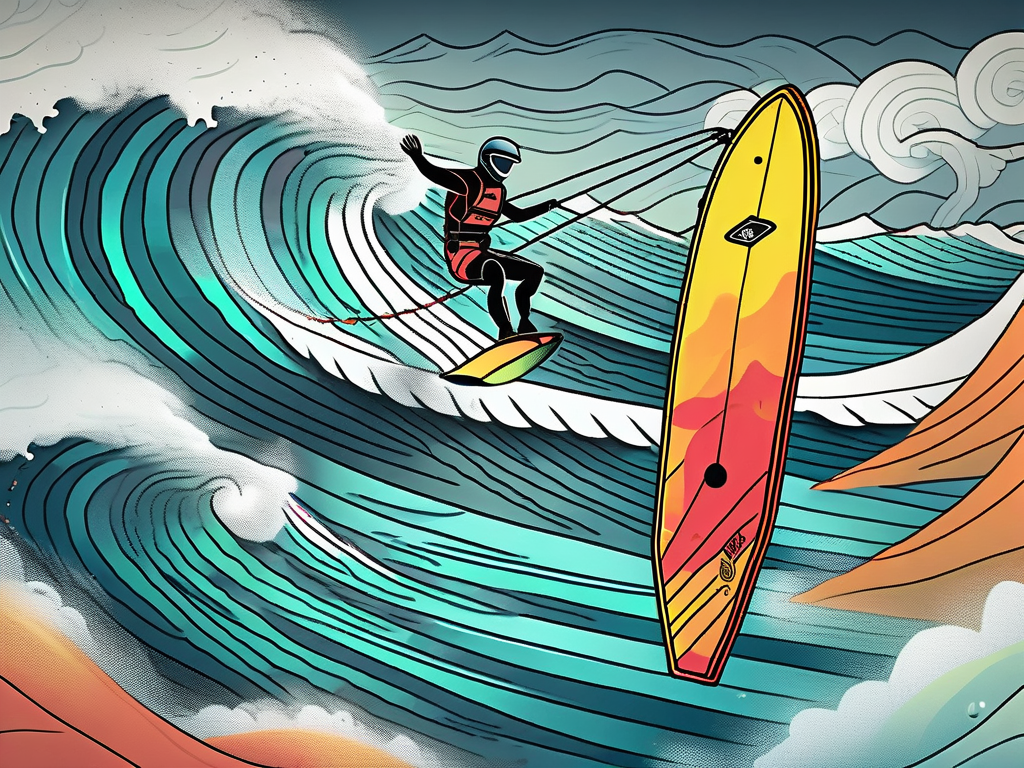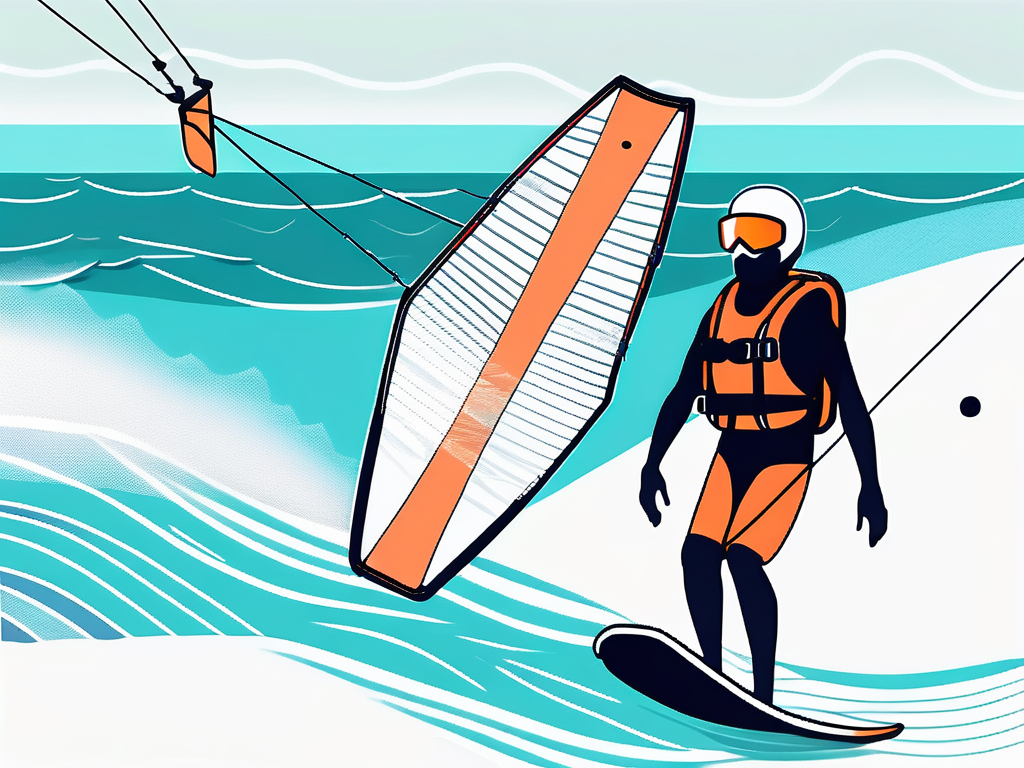Kitesurfing is an exhilarating sport that combines the excitement of surfing with the power of a kite. However, it is important to remember that kitesurfing can also pose serious risks if proper safety measures are not taken. In this article, we will explore the essential kitesurfing safety tips that every enthusiast should know to ensure a thrilling adventure while staying safe on the water.
Understanding the Risks of Kitesurfing
Before embarking on any kitesurfing adventure, it is crucial to have a clear understanding of the risks involved. As with any water sport, there is always a chance of accidents and injuries. From strong winds to unpredictable waves, kitesurfers must be prepared to face various challenges. However, by taking proper precautions and undergoing sufficient training, these risks can be minimized.

The Importance of Proper Training for Kitesurfing
One of the most crucial safety measures you can take as a kitesurfer is to undergo proper training. This involves enrolling in certified kitesurfing schools and learning from experienced instructors. These professionals will teach you essential skills, such as kite control, body positioning, and self-rescue techniques. Additionally, they will educate you on wind patterns, weather conditions, and any local regulations to ensure you have a safe and enjoyable kitesurfing experience.
Choosing the Ideal Weather Conditions for Kitesurfing
When it comes to kitesurfing, the weather plays a significant role in determining your safety on the water. It is essential to choose the ideal weather conditions that align with your skill level and equipment. As a general rule, beginners should opt for calm winds, preferably between 10 to 20 knots, to avoid overpowering their kite. Strong gusts and stormy weather should be avoided, as they can result in accidents and loss of control.
Identifying and Managing Hazards While Kitesurfing
While kitesurfing, it is crucial to be aware of potential hazards in the surroundings. These can include other watercraft, swimmers, rocks, piers, or even unexpected changes in wind direction. Keeping a constant lookout and maintaining a safe distance from any potential dangers is essential. Additionally, being knowledgeable about local rules and regulations will help you navigate the waters responsibly and further reduce the risk of accidents.
Essential Safety Gear for Kitesurfing
Investing in the right safety gear is vital to protect yourself while kitesurfing. This gear includes a well-fitted helmet, a buoyancy aid or life jacket, and a harness. The helmet provides protection for your head in case of falls or collisions, while the buoyancy aid ensures you stay afloat in the water. The harness securely attaches you to the kite, allowing for better control and minimizing the risk of being separated from it.
The Significance of Regular Equipment Maintenance
Regular maintenance of your kitesurfing equipment is essential for your safety on the water. Before each session, inspect your kite, lines, and bar for any signs of wear and tear. Check for frayed lines, loose stitching, or damaged parts that may compromise its performance. It is also crucial to properly store and clean your equipment after each use to prolong its lifespan and ensure it remains in optimal condition.
Setting Boundaries: Knowing When to Stop
As much as we all desire an adrenaline rush, it is vital to know your limits and when to call it a day. Kitesurfing can be physically demanding and exhausting, especially when the wind picks up. Pushing yourself beyond your capabilities can lead to fatigue, increasing the risk of accidents. Always listen to your body and recognize the signs of exhaustion. Knowing when to take breaks and rest is just as important as the thrill of riding the waves.
Etiquette and Safety: Navigating Crowded Waters
When kitesurfing in popular spots or crowded waters, it is crucial to practice proper etiquette and safety measures. Respect other water users and give them ample space to maneuver. Always give right of way to boats and swimmers, and avoid kiting in areas designated for swimming. Clear communication is also crucial, both on the water and on the beach, to ensure everyone understands your intentions and can act accordingly.
Self-Rescue Skills Every Kitesurfer Should Master
No matter how experienced you are, there is always a chance of equipment failure or getting caught in adverse conditions. Therefore, it is essential to master self-rescue techniques. These include relaunching your kite from the water, self-landing, and using your board as a flotation device. By being able to take care of yourself in challenging situations, you significantly increase your safety and reduce the need for external assistance.
The Benefits of Kitesurfing with a Companion
While kitesurfing can be a thrilling solo experience, going out on the water with a companion adds an extra layer of safety. Having a fellow kitesurfer nearby means there is someone to assist you in case of an emergency or equipment failure. Additionally, kitesurfing with a friend allows for mutual support and encouragement, making the entire experience more enjoyable.
Now that you have a deeper understanding of the risks and safety measures associated with kitesurfing, you can approach this exhilarating sport with confidence. Remember, safety should always be your top priority, and by following the guidelines outlined above, you can enjoy the thrill of kitesurfing while minimizing the potential dangers. So, grab your gear, head out to the water, and let the wind carry you to new heights!
Safely Enjoying the Thrills of Kitesurfing
Kitesurfing is an incredible sport that offers a unique combination of excitement and freedom. By following these essential safety tips, you can ensure that your kitesurfing adventures are thrilling and enjoyable while minimizing the risks associated with this exhilarating activity. Remember, safety should always be your top priority, no matter how tempting the waves may be. Stay informed, take proper precautions, and embrace the exhilaration of kitesurfing with confidence!

One crucial aspect of kitesurfing safety is understanding the wind conditions. Before heading out, make sure to check the weather forecast and assess the wind strength and direction. Different kite sizes are suitable for various wind speeds, so choosing the right kite for the conditions is key to a safe and enjoyable experience. Additionally, being aware of potential wind gusts and shifts can help you anticipate and react to changes in the wind while out on the water.
Furthermore, proper equipment maintenance is essential for a safe kitesurfing session. Regularly inspect your kite, lines, harness, and board for any signs of wear and tear. Ensure that all components are in good working condition and replace any damaged parts before hitting the water. Taking the time to care for your gear not only enhances your safety but also prolongs the lifespan of your equipment, allowing you to continue enjoying the thrills of kitesurfing for years to come.


















